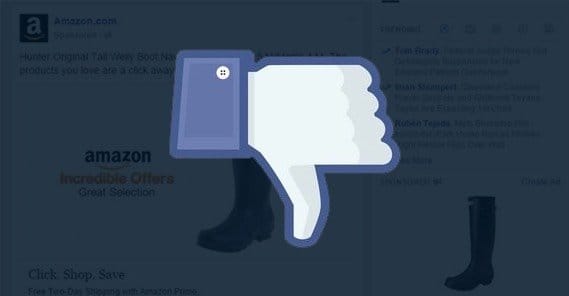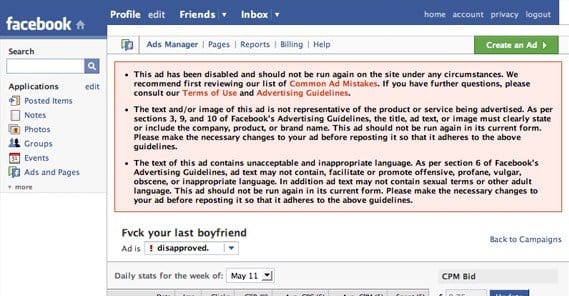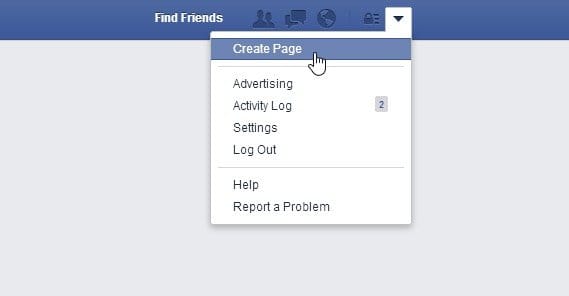How to Run Affiliate Links Through Facebook Ads

Many marketers consider Facebook to be one of, if not the best pay per click advertising platform available. It just has so much going for it! There are billions of users on the site, all of which have a ton of personal information added to their databases. That information makes for extremely robust and accurate targeting for advertising. The volumes involved mean that the ads tend to be pretty cheap for nearly all demographics. Plus, with the right kind of objective, you only pay when someone actually clicks through, meaning you can be getting thousands of views for absolutely free.
To me, this sounds like a great opportunity for affiliate marketing. After all, affiliate marketing works by getting people to click a link; if you only pay for people who click the link, you’re practically guaranteed to make money. If you can pay $10 for a ton of clicks and make $100 from those clicks all told, you’re raking in the profit. Plus, you don’t even need much for Facebook ads. A little copy, a compelling image, and you’re up and running in minutes.
The question is, does Facebook allow it? Can you actually do this, or will Facebook take action against you if you try?
What Facebook Has to Say
Facebook has a very comprehensive list of advertising policies, which you can find here. Now, I’m pretty familiar with them, and I haven’t spotted a line anywhere that says you can’t use affiliate marketing links.
At the same time, the personal experience of a lot of people posting in the Facebook help center and on forums like Warrior or Black Hat World is that affiliate links are generally blocked or rejected. Yet at the same time, you can just disable your ad blocker and browse Facebook for a while, and I can virtually guarantee you’ll see some affiliate links before the day is done. They clearly get through, so what’s the deal?
There are two answers at work here. The first is that Facebook is notoriously fickle with their policy enforcement. They banned clickbait, but you and I both know there’s more clickbait than there is legitimate content on Facebook these days. They had a rule regarding text density – thankfully removed – that was incredibly dumb.
The fact is, Facebook is used by hundreds of thousands of marketers every day, and it’s impossible for the relatively small advertising policies and enforcement team within Facebook to enforce everything. Their algorithmic scans and automatic rejections can only handle so much.
The other reason some people get affiliate ads through and others don’t is that some affiliate networks are more picky than others. Amazon, for example, doesn’t want you advertising through Facebook ads directly, and will often discover and close out your account.
Even Facebook help center staff don’t see anything wrong with using affiliate links in Facebook ads, as seen here.
There are essentially four ways you can run affiliate marketing through Facebook.
1: Just Go For It
The first method is, as the title suggest, to just go for it. Facebook won’t ban your ads account just for having an affiliate link in an ad. If anything, they’ll reject the ad and not really tell you why. That’s a hassle, for sure, but it’s something you can deal with. Just create your ad, write your copy, upload your image, add in your link, and set your targeting. See if Facebook lets it through or not.
There are two caveats to this method. The first is that, if Facebook decides to reject your link, you won’t be able to use that link again. You’ll have to change it in some way to get the same content in another Facebook ad. Now, it’s pretty rare for them to blacklist an entire domain, but they’ll filter specific pages on occasion.
The second caveat is that you need to make sure your affiliate network allows it. Amazon doesn’t, for example, so you can have your Amazon Associates account closed for abusing Facebook ads in this manner. Amazon is fine with organic posts and they’re certainly fine with affiliate websites, it’s just paid ads they don’t like as much. And, really, that’s likely because you end up competing directly with Amazon for the space. For any other affiliate network you’re looking at using, make sure to check their terms of service or talk to an account representative before you risk your account.
2: Go Eat a Sandwich
The second method you can use to get an affiliate link through the Facebook ad filter is to use a sandwich page. This is sort of a variation on using a hard redirected URL.
With a redirected URL, the user clicks the Facebook ad link and thinks they’re going to Site A. When they land on Site A, they are immediately redirected to Site B, which would be Amazon or whatever your affiliate happens to be. They’re now on a site they don’t know and didn’t intend to visit, and they’re tagged with an affiliate code they weren’t aware of. This is generally frowned upon as a form of URL cloaking, and might get your Facebook ads account suspended.
A sandwich page is something you put on Site A as a landing page. The user lands where they had intended to land, but as it turns out, that page is little more than a landing page optimized for one purpose; getting them to click through to the affiliate destination.
This does require that you, well, have a page you can use as a sandwich page. You can set up a cheap WordPress site, or you can use some free hosting, whatever works. If all you’re doing is setting up sandwich landing pages for your ads, you don’t need to worry much about Google rankings or SEO or anything like that. The only thing you should look into is landing page optimization. I recommend both that guide and the 101 tips from Unbounce as good crash courses if you aren’t already experienced.
Landing page optimization is crucial, because you still need to get the traffic you paid for to click through your affiliate link. If your landing page isn’t compelling enough, a lot of people are going to drop off, not interested in what you have to sell. With a good landing page, you funnel more people through to your affiliate, and can make more money more reliably.
3: Your Own Biggest Fan
If you want to avoid making a website of your own, you can use Facebook to do it for yourself. Creating a fan page is pretty easy, plus it’s a lot more likely to be kosher with both Facebook advertising rules and affiliate network rules. It looks and functions just like any other business page on Facebook.
Essentially, what you’re doing is creating a branded Facebook page for your affiliate presence. You need to post and share content that would be interesting to the people who might be your customers, and you need to pepper in your affiliate links. You don’t want an affiliate link in every single post or it becomes very transparent that you’re only there for the links. Make it look more likely you’re there for the passion and you’ll attract more genuine followers.
Your process will begin with organic posting, trying to attract people who will be interested in your shop, your genre of products, etc. You want to get a base of a few hundred users who will form the foundation of your future marketing. It’s important to have them around, so you can base your demographic and interest targeting on their demographics and interests.
Once you have this base, you can use lookalike audience targeting to reach more similar users and bring them into your Facebook page, where they can like and follow you. Once they’re in your audience, you can have more accurate targeting with future ads, and you have a wider audience to market to right away.
With your organic marketing and your paid promotion to get new users, you can add in more paid promotion to promote specific affiliate posts. Certain links or products you find convert at a high rate, you can then promote the post as an ad. This gets even more exposure and more conversions on your already high converting links.
The biggest downside to this method is that you’re stuck in the loop of using Facebook for everything. A few stray reports, a filtered link, or a suspended page and your entire business model is destroyed. You’ll have to start from scratch, and it’s always harder the second time.
4: The Full Website
At this point, you’re probably thinking that relying on Facebook alone is too stressful and too limited. If that’s the case, you’re right! You have one more option that gives you complete control over your affiliate marketing. However, it’s going to be both more expensive and more work to set up, because you’re setting up an entire website.
- Pick up good web hosting.
- Set up your website, by considering your niche to pick a good URL.
- Make sure your site is filled with excellent content.
- Start building links in as many places as you can.
- Optimize your site for white hat SEO.
That’s all a very basic overview, but really, I don’t have the space to cover the entirely of web marketing in one subsection of a post not really related to it.
Of primary concern for this method is the time and money involved in setting it up. You’ve gone beyond the scope of simply using Facebook ads to leverage into money. It’s quite expensive to run a website with regular content updates, work put into SEO and keyword research, and all the rest. You can outsource it, but if you’re not making bank from some other sources, you’re probably not going to get a positive return on your investment.
If all of this sounds like too much work for too little return on investment, affiliate marketing might not be right for you. Running Facebook ads and getting a positive return on investment isn’t necessarily too hard, but the profits are generally going to be low. We’re talking beer money, not career change.
At the end of the day, you just need to figure out what style of marketing clicks with you, and what you can run to make a profit. If you don’t have the time or money for a full website, you can start small with a Facebook page and grow from there. If you’re ready to invest in the full website deal, by all means, give it a shot.
I will say that number one, the pure Facebook ads method, can be useful for one thing: testing. You can figure out in a broad, general basis which kinds of products do best on the site, or with the audience you’re targeting. By running ads to a specific audience, you find out if that audience is interested more or less than average in the products you’re promoting. You can use it as a cheap, low-effort feeler to guide your future marketing.
Just make sure you’re actually getting a representative sample, and that you have some baseline data to compare it to. It does no good to have one statistic; you want to be able to see if your new statistic is lower or higher than the average. This means, of course, that you need an average. Likewise, you need to pay for enough exposure that statistical variance isn’t an issue. If you only run enough that 10 people see, it can be a significant jump in conversion rate if one person makes an impulse buy. That’s not representative of your marketing as a whole.
 ContentPowered.com
ContentPowered.com








Kenny, I’ve started Affiliate marketing in the last 2 weeks, and in that time I have not stopped reading and watching, this is the best article I have read, great job buddy, simple, specific and completely relevant, just 1 question at the end of you seemed as if there is no real money to be made in it, is that right?